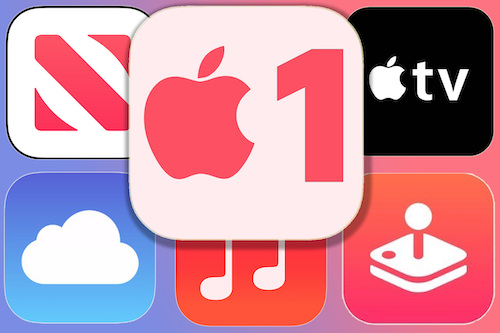
Apple has a big problem with television and it’s called distribution. Or lack thereof, as the case may be.
This was the proverbial elephant in the room during yesterday’s Apple event, though they seemingly did nothing to address it.

Instead they rolled out something called Apple One that came with a whole lot of non-TV subscriptions that didn’t seem all that compelling, especially if you’re a Spotify user and the idea of having to recreate all your playlists and preferences just to save a few dollars fills you with dread.
I could go off on how no one really needs yet another fitness app, or complain about Apple News, which still doesn’t recognize that I’m already a Wall Street Journal subscriber. But those are merely distractions from the main issue--how does Apple plan to distribute Apple TV Plus, its wannabe TV bundling service?
It’s a disappointment (I’m not mad at you Tim Cook, just disappointed) because what Apple has cooked up is a pretty good deal for both consumers and programmers.
Consumers get an easy-to-manage TV interface with the easy-on-the-eyes, easy-on-the-brain UX Apple is known for, while programmers don’t need to give up ad revenue, a tribute they need to pay to both Roku and Amazon.
As a result, Apple has been able to strike deals with all of the new SVOD offerings (aka "Flixes")--Peacock and HBO Max in particular--which gives them a broader array of Flixes than their competitors.
The smarter way to stay on top of the streaming and OTT industry. Sign up below.
But what is the use of having a well designed, well thought out pay TV aggregation service if very few users can actually get their hands on it?
There is, of course, the actual Apple TV device, the one that costs $180 vs. Roku and Amazon’s $29, which is why it’s not even a factor anymore. (Most surveys have Apple TV’s share of the U.S. streaming device market at somewhere in the 10%-15% range, vs. Roku and Amazon which are in the 35%-40% range.)
What’s baffling here is the price point, as Apple has worked with consumers on this in the past, when it realized back in the 00s that not everyone could afford an iPod and thus rolled out both the Nano and the Shuffle, low-priced devices that put That Apple Magic into everyone’s hands. (Or the pockets of their running shorts, anyway.)
Back to Apple TV though. Apple recently struck a deal with Vizio, the second largest smart TV manufacturer in the U.S., to have the Apple TV Plus app live on the home screen of Vizio smart TVs, where it will be one of the many apps available via SmartCast, VIZIO’s well-designed operating system.
Viewers will thus need to actively seek out the Apple TV app if they want to connect to other apps via Apple TV, and I just don’t see most of them taking that extra step unless there’s a compelling reason for them to do so. (There’s not.)
While Apple TV Plus may not have much distribution on smart TVs or connected devices, it does live on every iPhone, iPad and Macbook where it can be cast to your TV via Apple’s proprietary AirPlay service.
This would seem like a seamless solution, only AirPlay is far from seamless.
It’s very buggy, something borne out both by personal experience and by the sizable number of posts and social media complaints about it. It also has an annoying design flaw: if I start watching something on my laptop and then send it to my TV via AirPlay, I need to keep both the browser window and the laptop open in order for the movie or show to keep playing. This immediately takes me back to early Netflix days when you’d need to connect your laptop to the TV with an HDMI cable and then balance the laptop, still open, somewhere in HDMI cable distance of the TV.
So that door seems to be shut as well.
Apple TV does have apps on both Roku and Amazon, but neither service is going to let Apple be an aggregator, at least not when they’re trying to be aggregators, too. And then there’s the ad business both services are intent on making happen.
Which brings us back to my original question: How is Apple planning to make bundled TV packages the core of its software offering without any sort of distribution?
Bundling is clearly the future, but it won't necessarily involve the services Apple is pushing. It's more likely the bundle of services people already have--Spotify, Google Drive and thousands of free YouTube workout videos. Those new bundles are going to be TV-centric bundles of Flixes and FASTs, with broadband thrown if the bundler is an MVPD.
While in the ideal world, those bundles would consist of something like “pick any four services for just $29.99/month,” it’s far more likely that they will be considerably more random than that. And they'll be based on whatever deals the bundler in question can strike, which in turn will be based on which services are most in need of an influx of new subscribers at the time the deal is struck.
The likely bundling behemoths will be the MVPDs (who can also bundle in broadband), the streaming device manufacturers (who will make the apps a part of their channel store offering) and independents like Paket Media, a startup that plans to put programmers in a position of power.
As for Apple, I truly do hope they figure it out, but right now nothing they’re doing seems to make a whole lot of sense.
Alan Wolk is the co-founder and lead analyst for media consultancy TV[R]EV

